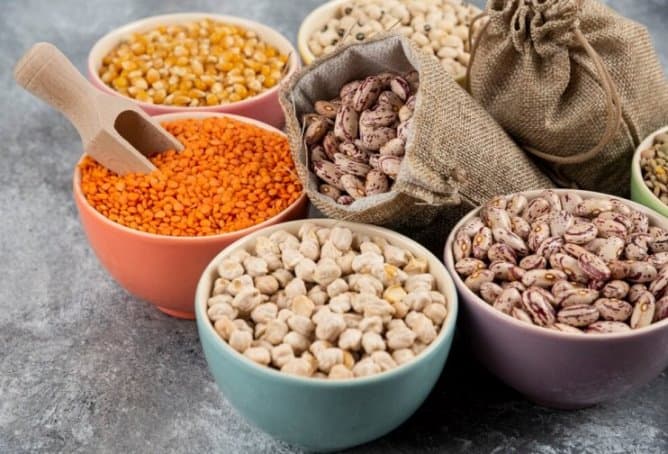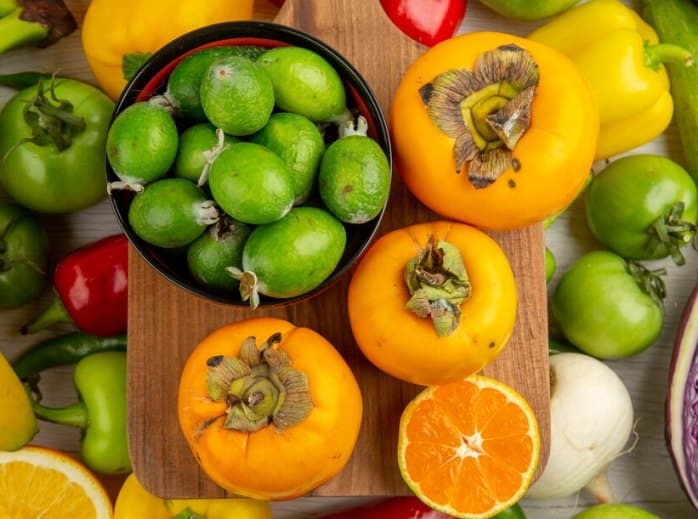Why is Non Heme Iron Harder to Absorb?
Non-heme iron is harder to absorb because it is not easily absorbed by the body’s digestive system. Non-heme iron has lower bioavailability due to its interaction with other food compounds, such as phytates and polyphenols, which can inhibit its absorption.
These compounds can form insoluble complexes with non-heme iron, making it more difficult for the body to extract and utilize. Additionally, the body’s ability to regulate non-heme iron absorption is influenced by factors such as the body’s iron stores and the presence of other dietary components.
Therefore, while non-heme iron is an important source of iron for vegetarians and vegans, it may require increased attention to dietary factors and consumption of iron-enhancing foods to ensure adequate absorption and utilization.
Table of Contents
Importance Of Iron in the Body
Iron is a vital mineral for human health, responsible for carrying oxygen throughout the body. This oxygen is delivered to all cells and tissues, ensuring proper functioning and supporting energy production.
Iron is also necessary for the synthesis of hemoglobin, a key component of red blood cells that transports oxygen from the lungs to every part of the body. Furthermore, iron is involved in several enzymatic reactions and supports the immune system, making it essential for overall well-being.
Read Also: Vegetarian and Vegan: What’s the difference?
Types Of Iron And Their Absorption
Iron exists in two forms: Heme Iron and Non Heme Iron. Heme iron is derived from hemoglobin and myoglobin, while non heme iron is found in plant-based foods, fortified products, and supplements.
Heme iron, typically found in animal-based foods such as meat, fish, and poultry, is more easily absorbed by our bodies. On the other hand, non heme iron, mainly present in plant-based foods like legumes, grains, and vegetables, poses a greater challenge for absorption.
| Iron Type | Food Sources | Absorption Rate |
|---|---|---|
| Heme Iron | Meat, Fish, Poultry | 15-35% |
| Non Heme Iron | Legumes, Grains, Vegetables | 2-20% |
Several factors influence iron absorption in our bodies. For instance, the presence of vitamin C enhances non heme iron absorption, while other substances like phytates, oxalates, and polyphenols can hinder absorption.
Additionally, the overall iron status of an individual and their specific physiological needs also impact absorption rates. Understanding these factors can help optimize iron absorption and ensure adequate intake of this essential mineral.
Sources of Non Heme Iron
Non heme iron refers to the type of iron that is predominantly found in plant-based food sources, as opposed to heme iron which is mostly derived from animal sources.
Here are some common sources of non heme iron:
| Food Source | Iron Content (per 100g) |
|---|---|
| Spinach | 2.7mg |
| Lentils | 3.5mg |
| Pumpkin Seeds | 8.8mg |
| Tofu | 5.4mg |
As you can see, incorporating these plant-based foods into your diet can increase your intake of non heme iron.
Challenges in Non Heme Iron Absorption
While non heme iron may be abundant in plant-based foods, its absorption by the body is not as efficient as heme iron. Several factors contribute to the challenges in non heme iron absorption:
- Low Bioavailability: Non heme iron has lower bioavailability compared to heme iron. This means that a smaller percentage of non heme iron is actually absorbed by the body for use.
- Inhibition by Other Compounds: Certain substances found in plant-based foods, such as phytates and polyphenols, can inhibit the absorption of non heme iron. For example, phytates, which are present in legumes and whole grains, can form complexes with iron, preventing its absorption.
- Enhancement by Vitamin C: On the other hand, certain factors can enhance the absorption of non heme iron. Vitamin C, found in fruits and vegetables, can promote the uptake of non heme iron when consumed together. This is why combining foods rich in non heme iron with sources of vitamin C is recommended to improve absorption.
Check Also: Why is My Body Not Absorbing Iron Supplements?
Inhibitors And Enhancers Of Non Heme Iron Absorption
Non heme iron absorption is influenced by various factors, with certain substances acting as inhibitors or enhancers of its absorption. Inhibitors include phytates, which are naturally occurring compounds found in whole grains, legumes, and some nuts and seeds.
These phytates bind to iron, forming complexes that are difficult for the body to absorb. Other inhibitors include polyphenols, found in tea, coffee, and some fruits and vegetables, as well as calcium, which can hinder non heme iron absorption when consumed in high amounts.
On the other hand, enhancers of non heme iron absorption include substances such as ascorbic acid (vitamin C) and organic acids found in fruits and vegetables.
Vitamin C helps to convert non heme iron into a more absorbable form, while organic acids, like citric acid present in citrus fruits, can increase the solubility of iron, making it easier for the body to utilize.
Strategies To Improve Non Heme Iron Absorption
If you follow a plant-based diet or simply want to optimize your non heme iron intake, there are several strategies you can employ to improve its absorption.
One approach is to pair non heme iron-rich foods with enhancers such as citrus fruits or bell peppers, both high in vitamin C. For example, squeezing lemon juice over a spinach salad or enjoying a glass of orange juice with your morning oatmeal can significantly boost iron absorption.
Another strategy is to soak and cook foods that contain inhibitors, like grains and legumes, as this can help reduce the phytate content and increase iron bioavailability. Fermenting foods rich in non heme iron, such as tempeh or miso, can also enhance iron absorption due to the breakdown of phytates during the fermentation process.
Furthermore, reducing the consumption of calcium-rich foods during meals high in non heme iron can improve absorption. For instance, consider having your iron-rich meal separate from dairy products or calcium supplements.
When it comes to non heme iron absorption, diet plays a pivotal role. Including a variety of non heme iron-rich foods in your meals, along with enhancers like vitamin C-rich fruits and vegetables, can help ensure adequate absorption.
Additionally, being mindful of inhibitors such as phytates and calcium and employing strategies to minimize their impact can further optimize non heme iron absorption.
Conclusion
To sum up, non-heme iron is harder to absorb compared to heme iron due to several factors. Its lower bioavailability is influenced by inhibitory substances, such as phytates and polyphenols, along with the lack of the enhancing effect of heme protein.
However, by combining non-heme iron with vitamin C-rich foods and carefully planning meals, it is possible to enhance its absorption and meet daily iron requirements.

